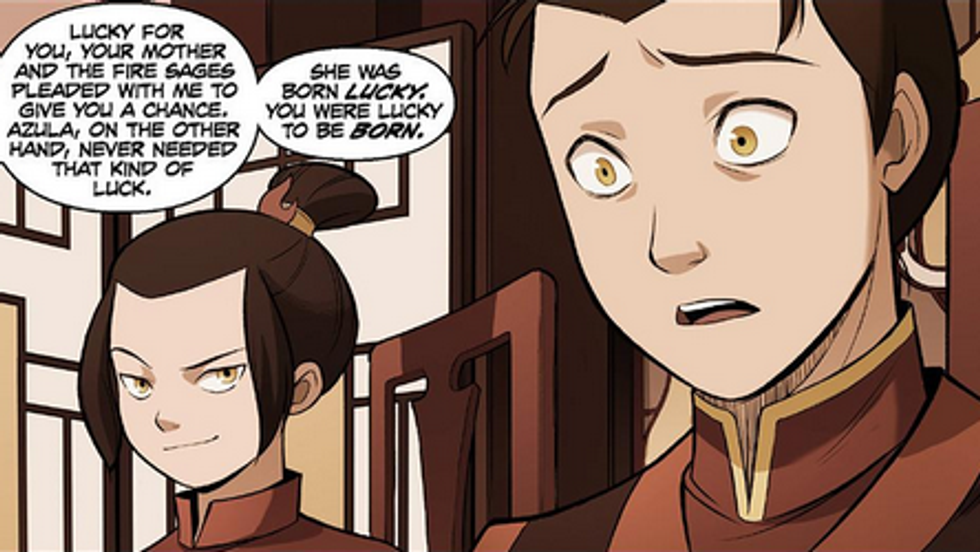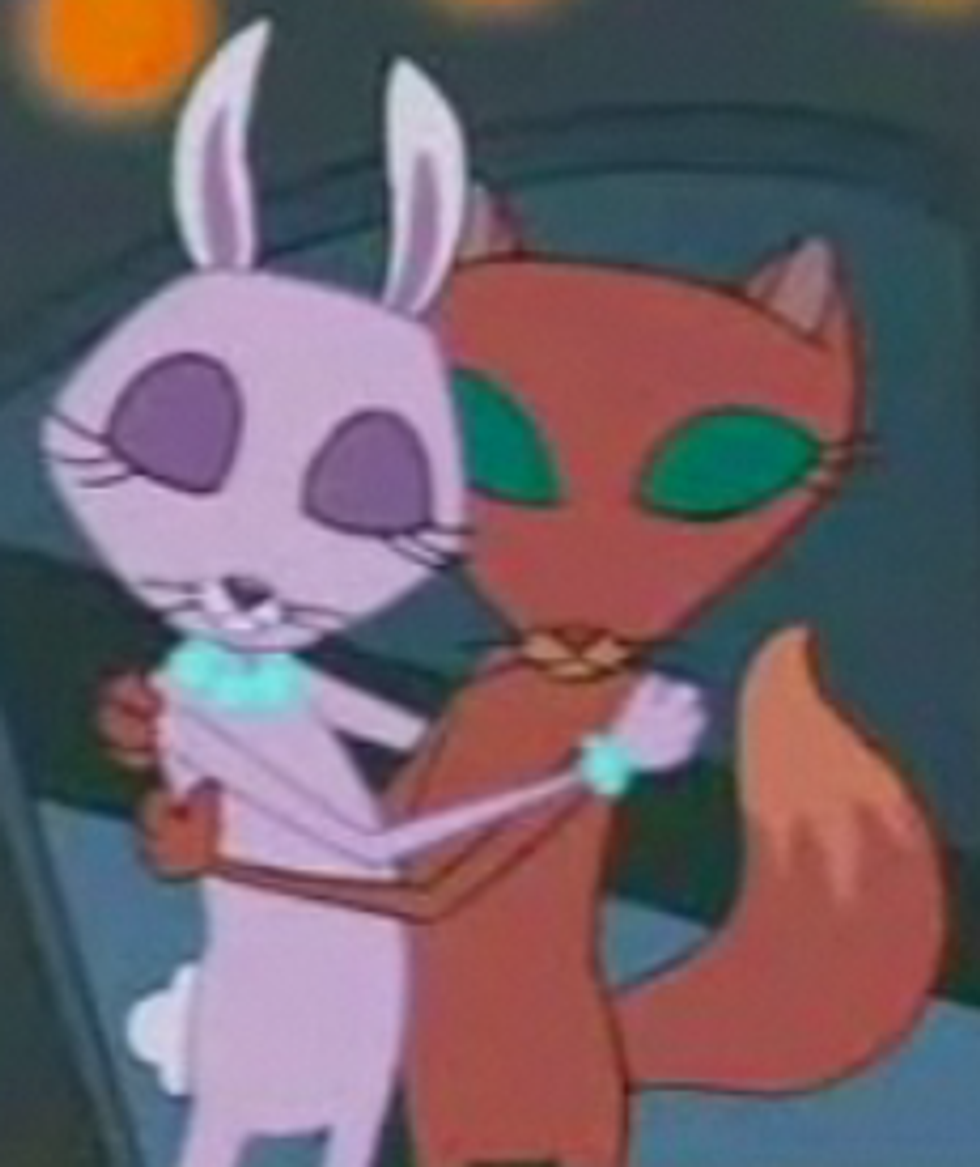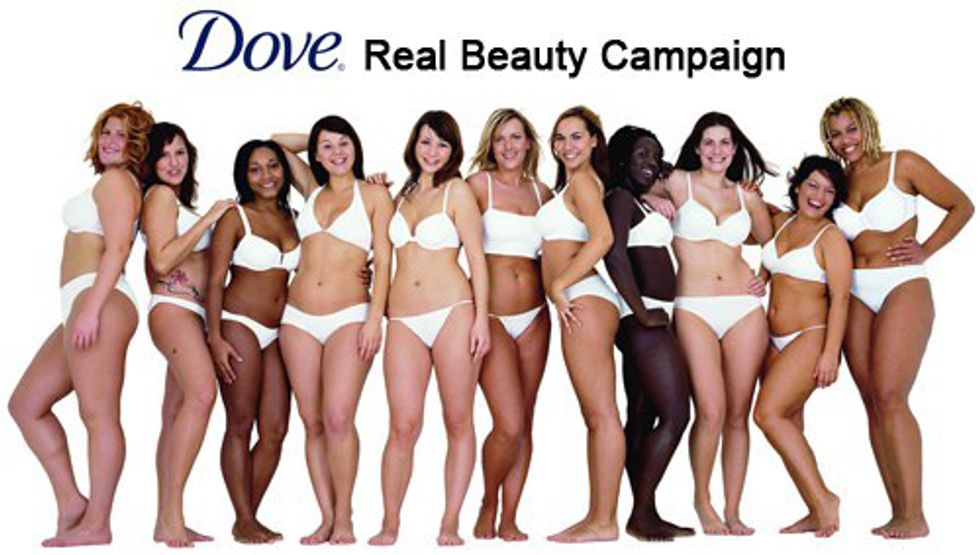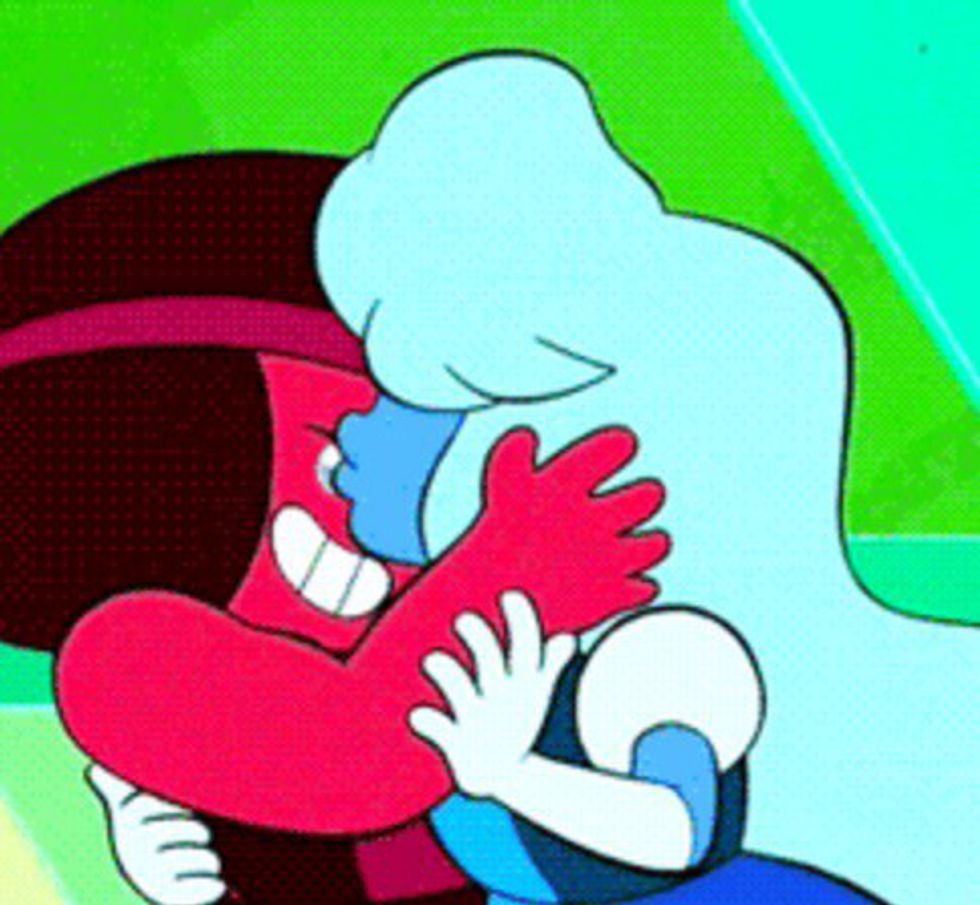I've seen this image time and time again, each one a variant of the other. Pictures of cartoon characters from the early days of Nickelodeon, Cartoon Network, and Disney Channel with captions stating 90s kids were the superior generation.Being raised by characters who were cross breeds between Cats and Dogs, an über sexist blonde with the desire to only hook up with attractive women. Even a show that has a character who is not borderline- but legitimately a stalker.
I will hold these shows close to my heart, especially with the fond memories of Friday nights when my father and I would watch cartoons "until our eyeballs exploded", but the cartoons of our childhood aren't always the best. Though I will admit to times where I've binge watched episodes on Youtube within the last few years. I'm not anti-90s cartoons, but in my 20 years I realize they weren't as perfect as we believe them to be. Recently I decided to ask some friends what were some shows from their childhood that they recalled trying to rewatch before realizing it was not everything they remembered. Answers included Spongebob Squarepants (1999-onward), The Land Before Time franchise (5 films of which were released between 1994 and 1998), Rugrats (1991-2004), Powerpuff Girls (1998-2005 with a recent reboot), and Courage the Cowardly Dog (1999-2002).
These shows did have their positive lessons however. For instance, Courage the Cowardly Dog portrayed one of the first LGBT couples in animation. In the episode "The Mask" three important topics are discussed: mysandry, domestic abuse, and Lesbianism. A cat named Kitty visits the farm in the middle of Nowhere. Donning a mask and white robe she initially shows hostility to the titular pup, but eventualy when Courage steals a mouse toy from her while sleeping and drives to a far off diner, Kitty's story is revealed. Whenever Kitty sees a dog, she automatically thinks of "Mad Dog" and his gang. Mad Dog is the alpha of a shifty gang known for living on the "wrong side of the literal tracks". Mad Dog is in a relationship with Kitty's best friend and secret romantic interest Bunny. However, Mad Dog is extremely abusive. Kitty is forced to don her mask and robes, as she is on the run from Mad Dog who had sworn that if he ever saw the feline, he would take her life. Courage finds Mad Dog's apartment and witnesses first hand as Bunny attempts to leave. Eventually Courage helps Bunny escape, and Bunny and Kitty are reunited. The romance is only nonverbally suggested, however creators of the show have confirmed that Bunny and Kitty do end up together romantically.
This is one of the first representations of the LGBT community I can personally remember that wasn't playing to a gay stereotype, and as more than just a joke. LGBT representation isn't the only representation that was important though. Doing some research however, I was surprised that many series that I remembered from my childhood as having dealt with strong, controversial topics were from the 2000s era.
For instance, who else remembers the 2003-2007 live action Disney Channel series That's So Raven? The show has a pretty comedic plot of a teenager with the ability to see into the future, but it was a bit more than that. Raven Baxter (played by Raven Symoné) was a character of color with a not-so-Barbie body. Two instances of social commentary include the episodes "True Colors" (Season 3, episode 10) and "That's So NOT Raven" (Season 2, episode 8). In True Colors, Raven and her friend Chelsea apply for the same job at a retail store. Despite succeeding in her job interview and proving she would be a good employee, only Chelsea is hired. It is later revealed that the manager of the store refused to hire black people. A commentary on how racism still remains in the new millennium. That's So NOT Raven shows Raven having one of her visions in which she sees herself modelling one of her original designs in a fashion show. As it turns out, yes her design won, but when the dress is shown in a magazine, Raven has been heavily edited to appear skinnier. The day of the fashion show Raven decides to walk the runway despite being pressured by the people running it to stay away because she wasn't thin enough. Eventually Raven gives a small speech before the people at the show, stating "Because, unless you haven't noticed, people come in all shapes and sizes, and they're all beautiful. Put THAT in your magazine".
Consider now how society is focusing so much on the idea of all bodies being beautiful. Campaigns like #AerieReal and
#DoveRealBeauty taking over, however. This episode came before any of that. True Colors was released longer than the phrase #BlackLivesMatter became not only popular, but essential. Children's cartoons may hide behind the title of being "childish", but in reality they cover some of the most adult topics that could exist. Children's TV is more progressive than the shows solely from the 90s that 90s kids claim make their childhood better than those born in the 2000s. In just a 10 year difference between the 90s and 2000s, Television had evolved. Neither the 90s nor the shows of the 2000s are better, but we've had a lot we can learn from both.
One of my favourite shows of all time is Avatar: The Last Airbender. It's heavily inspired by Asian culture, and tells the story of a 12 year old named Aang and his friends Katara and Sokka. Aang is the last of his people, as 100 years ago the Air Nomads (based off Tibetan Buddhism) were the victims of mass genocide. The only reason why Aang survived was because he had been trapped in an iceberg. The world is made up of four major lands. The Water Tribe, Earth Kingdom, Fire Nation, and Air Nomads. However, the world is not at peace and tells the story of a 100 year war, and how Aang is destined to be the one to end the turmoil. The show not only covers war, but disabilities, immigration, child abuse, and to various extents mental health.
One of the main characters of the series is Zuko, a sixteen year old royal from the Fire Nation. When he was fourteen he was banished by his father, who is the overall villain of the show, after speaking out of turn in a war meeting in attempt to protect some soldiers. He was raised to believe that this honorable action was quite the opposite. Even though he was the older sibling (in many Asian cultures 
Something else Avatar does well to represent is characters with disabilities (as more gone into in this article). However, in this world the people with disabilities have been able to find ways to not let it handicap their ability to live life to their full potential.
The most popular example of this is Toph Bei Fong. Toph is twelve years old and the child of one of the wealthiest families in the universe. Something great about Toph is that even though she was born blind, she uses her ability to manipulate the earth to "see" (Toph: Even though I was born blind, I've never had a problem seeing. I see with earthbending. It's kind of like seeing with my feet. I can feel the vibrations in the earth, and I can see where everything is. You, that tree, even those ants"). There are limitations to this ability though. The Gaang, as the fandom has affectionately called the group of heroes, travel primarily by flying bison, and since they are not on the ground, Toph cannot see. She also often needs to have characters read to her since there is no version of braille. Despite this, Toph is the greatest earthbender their world has come across, even creating a way to manipulate metal. Quite a few times around the internet I have seen this one story from a mother about being told her daughter was going blind. To try and calm her mother down, the child told her that things would be okay because she would become "just like Toph". Avatar was also very successful with representation in the spin off series where the new hero (Korra) was a bisexual woman from the Water Tribe and was confirmed by the creators to have ended up with another woman named Asami Sato at the end of the series.
Finally, there is the series that as a bisexual female I wish I had during my female development, also known as Steven Universe. Not only is this a series that delves deeper into showing LGBT relationships in a non-sexualized way, but also a show which features various body sizes, a majority of the characters are gender-less (but appearance wise are female), episodes meant to cover various topics (depression,anxiety, getting over death, etc), having a cast of various cultures, and features a character who uses they/them pronouns (Stevonnie- the fushion between Steven and his best friend Connie). When creator Rebecca Sugar was asked at San Diego Comic Con why she had so many diverse couplings, Rebecca responded with “There’s an idea that these are themes that should not be shared with kids, but everyone shares stories about love and attraction with kids. So many stories for kids are about love, and it really makes a difference to hear stories about how someone like you can be loved. It’s very important to me that we speak to kids about consent, that we speak to kids about identity… I want to feel like I exist, and I want everyone else who wants to feel that way to feel that way too.”
90s Cartoons will always have a special place in my heart as being what were important parts of my growth. I'm thankful to each one for being a continuous form of entertainment, but I feel as if the cartoons afterwards were what made my childhood better. I learnt more about Asian cultures, toxicity in families, and many words of wisdom from Avatar, the appearance of racism in modern times from Raven, and more recently calming mechanisms when it came to depression and anxiety. Some people talk about how the 2000s kids have made them lose a hope for humanity, but I feel like with what is becoming available to these children is setting the world up for great things.


























